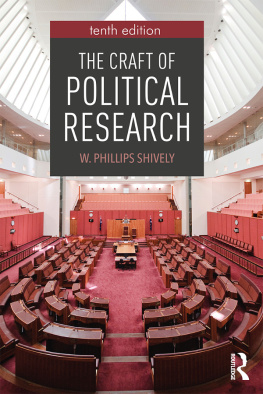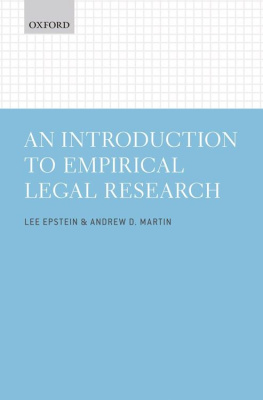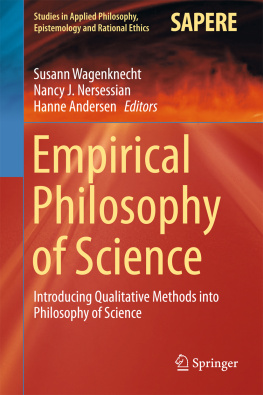Cover

| title | : | Empirical Direction in Design and Analysis |
| author | : | Anderson, Norman H. |
| publisher | : | Lawrence Erlbaum Associates, Inc. |
| isbn10 | asin | : | 080583978X |
| print isbn13 | : | 9780805839784 |
| ebook isbn13 | : | 9780585384122 |
| language | : | English |
| subject | Psychometrics, Psychology--Methodology. |
| publication date | : | 2001 |
| lcc | : | BF39.A49 2001eb |
| ddc | : | 150/.1/5195 |
| subject | : | Psychometrics, Psychology--Methodology. |
Page i
Empirical Direction
in Design and Analysis
Page ii
This page intentionally left blank
Page iii
Empirical Direction
in Design and Analysis
Norman H. Anderson
University of California, San Diego

Page iv
President/CEO: | Lawrence Erlbaum |
Executive Vice-President, Marketing: | Joseph Petrowski |
Senior Vice-President, Book Production: | Art Lizza |
Director, Editorial: | Lane Akers |
Director, Sales and Marketing: | Robert Sidor |
Director, Customer Relations: | Nancy Seitz |
Senior Editor: | Debra Riegert |
Textbook Marketing Manager: | Marisol Kozlovski |
Editorial Assistant: | Jason Planer |
Cover Design: | Kathryn Houughtaling Lacey |
Textbook Production Manager: | Paul Smolenski |
Text and Cover Printer: | Hamilton Printing Company |
The final camera copy for this work was prepared by the author.
Copyright 2001 by Lawrence Erlbaum Associates, Inc.
All rights reserved. No part of this book may be reproduced in any
form, by photostat, microform, retrieval system, or any other
means, without prior written permission of the publisher.
Lawrence Erlbaum Associates, Inc., Publishers
10 Industrial Avenue
Mahwah, New Jersey 07430
Library of Congress Cataloging-in-Publication Data
Anderson, Norman H.
Empirical direction in design and analysis / Norman H. Anderson
p. cm.
Includes bibliographical references and index.
ISBN 0-8058-3978-X (cloth: alk. paper)
1. Psychometrics. 2. PsychologyMethodology. I. Title.
BF39 .A49 2001 |
150.15195dc2l | 2001033377 |
CIP |
Books published by Lawrence Erlbaum Associates are printed on
acid-free paper, and their bindings are chosen for strength and
durability.
Printed in the United States of America
10 9 8 7 6 5 4 3 2 1
Page v
DEDICATION
This book is dedicated to the many students who have been in my courses for the last 40 years. You have taught me a lot; I deeply appreciate this unique learning experience. I hope your lives have been rewarding. This book seeks to continue as coach and aide, passing on to new students what we together have learned.
This book has benefited from comments of numerous persons. I owe special thanks to Richard Bogartz, Edward Karpp, Pamela Moses, Charles Reichardt, Anne Schlottmann, Ewart Thomas, and James Zalinski. Many others have made helpful comments on various issues and sections. Among these are James Alexander, Gwendolyn Alexander, James Anderson, Mark Appelbaum, Margaret Armstrong, Ann Norman Atkinson, Rita Atkinson, Eileen Beier, Michael Birnbaum, Donnie Bocko, Lyle Bourne, Gordon Bower, Clifford Butzin, Robert Calfee, Edward Carr, Jenny Cantor, John Clavadetscher, Diane Cuneo, Claire Ernhart, Robert Farber, Arthur Farkas, Philip Gallo, William Gayer, Anthony Greenwald, Reid Hastie, Wilfried Hommers, Stephen Hubert, James Jaccard, Beth Jaworski, Martin Kaplan, Eileen Karsh, Lucille Kirsch, James Kulik, Andrius Kulikauskas, Anita Lampel, Irwin Levin, Stephen Link, Frank Logan, Lola Lopes, Jordan Louviere, Tracy Love-Geffen, Donald MacLeod, Irving Maltzman, George Mandler, Jean Mandler, Sergio Masin, Mark McDaniel, Jennifer McDowell, William McGill, William McGuire, Craig McKenzie, Colleen Surber Moore, Philip Moore, Etienne Mullet, Gregg Oden, Allen Osman, Allen Parducci, Mary Pendery, Joan Prentice, Mike Rinck, Maria Teresa Sastre, Shlomo Sawilowsky, Sandra Scarr, Laura Schreibman, John Shaughnessy, Juliet Shaffer, James Shanteau, Ling-Po Shiu, Ramadhar Singh, Cheryl Graesser Stecher, Jeff Steinberg, Saul Steinberg, Billy Vaughn, John Verdi, Mingshen Wang, David Weiss, Ben Williams, Wendy Williams, Friedrich Wilkening, John Wixted, Yuval Wolf, Chungfang Yang, Gregory Zarow, and Shu-Hong Zhu.
Page vi
FOREWORD
Statistics should be an organic component of substantive investigation. This is how statistics should be learnedand how it should be taught.
A text should aim to give students what they will later need to know . What students will later need to know is how to utilize statistics in their empirical work. To get such transfer requires that statistics be embedded within a framework of substantive inquiry.
Substantive investigation rests on extrastatistical inference substantive considerations concerning validity of task-procedure and generality of results. Practical understandingtransfer to empirical analysisrequires that statistics be integrated into a larger framework of extrastatistical inference.
This extrastatistical theme is embodied in the Experimental Pyramid of Figure 1.1. The six levels of the Pyramid portray a hierarchy of considerations involved in empirical investigation. Statistics, to be effective, needs to be integrated into the substantive considerations at each level of the Pyramid.
The main value of statistics is in planning the investigation, long before the data are collected. Contrary to the standard stereotype, the main function of statistics is to get more information into the data.
Current texts pursue two largely incompatible goals: To be a text for first-year graduate students and to serve as a reference handbook for advanced researchers. Both audiences suffer thereby, especially first-year students. Facing a plethora of formulas, uncertain which are basic, doing exercises largely devoted to numerical calculations, first-year students are hindered and side-tracked from developing understanding and research judgment.
Chapters 112 present a core intended for first-year graduate students. Far fewer formulas are presented than in other texts, which is intended to facilitate conceptual and empirical understanding. Two novelties are the heavy emphasis on confidence intervals and the separate chapters on confounding and single subject design.
Next page










